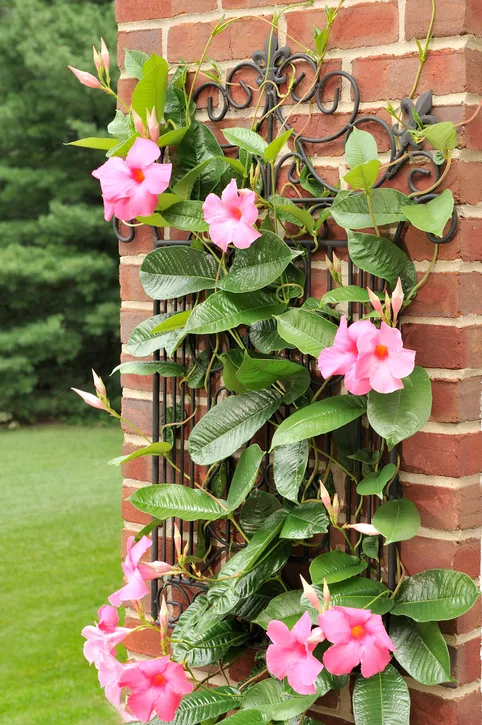Not every Dipladenia benefits from a trellis. Some varieties naturally grow rather compact or even hanging. These are very suitable for balcony boxes or hanging baskets. However, you should give high-growing and climbing species a climbing aid.
 Climbing Dipladenia appreciate a trellis
Climbing Dipladenia appreciate a trellis
The Dipladenia as a houseplant
A rather small and compact-growing Mandevilla is also particularly suitable as a houseplant. If you have a large conservatory, you can also grow a climbing variety in a large tub. However, this definitely needs a trellis or another climbing aid so that it gets a nice shape. So you have a unique eye-catcher when the Dipladenia is in full bloom.
The Mandevilla likes to stand on a sunny window sill, but should not be exposed to the blazing midday sun for too long. It also does not tolerate drafts very well. In summer she likes temperatures of at least 20°C so that she can produce plenty of flowers.
The dipladenia on the balcony
The Dipladenia also feels very comfortable on the balcony, provided you place the plant well. She likes to be sunny and warm and doesn't like wind too much. Many varieties start flowering at a small size of around 30 to 40 cm. You can keep these small with a regular trim if you wish. But hanging dipladenia are also a beautiful sight on the balcony.
The Dipladenia in the hanging basket
If you would like to plant a Dipladenia in the hanging basket (€11.99), then it is best to opt for a hanging version. This is how the funnel-shaped flowers come into their own. As with any plant variant, care is quite simple: water moderately and fertilize regularly.
The essentials in brief:
- Trellis for high-growing and climbing varieties
- the Mandevilla can be kept small with clever pruning
- hanging varieties do not require climbing aids
tips
Provide your Dipladenia with a trellis or other trellis if you want it to grow tall. It is a wonderful climbing plant.